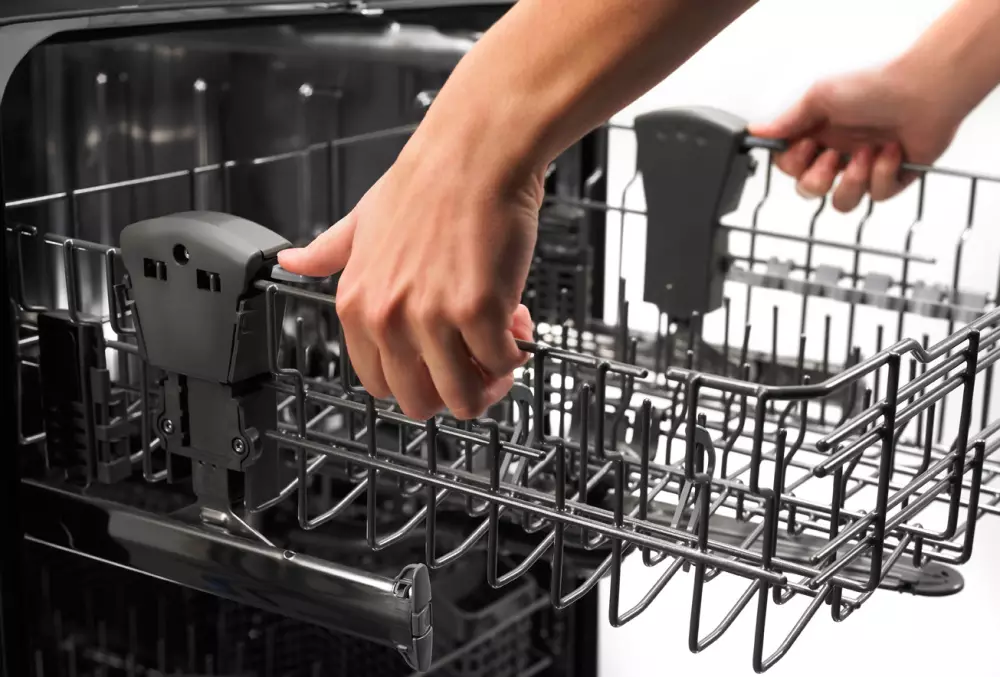How To Clean Kitchen Cabinets: Your Ultimate Guide to Make Them Look Clean And Sparkling
We all want our kitchen cabinets to look clean and sparkling, but cleaning them can be a pain. It's good that you're here because we've got an easy guide to help you clean kitchen cabinets and get them back in shape. You'll learn about what kind of products and tools you need, different ways how to clean kitchen cabinets, how to make sure they stay clean for as long as possible, and even some helpful tips for keeping them looking good after you've cleaned them.
It's a fact. Kitchens are essential rooms in your home. They're not just where you prepare food. They're where you hang out with your family and friends, entertain guests, and where you can make yourself feel at home.
But even if your kitchen is immaculate, there's a good chance that its cabinets could look better. If you want to give your kitchen a significant facelift, cleaning the cabinets and hiring a house cleaning service to do it for you is one of the best ways to do it.
It doesn't take much time or effort. It just takes the right tools and products.
Here's everything you need to know about cleaning kitchen cabinets so that they look shiny and new again!
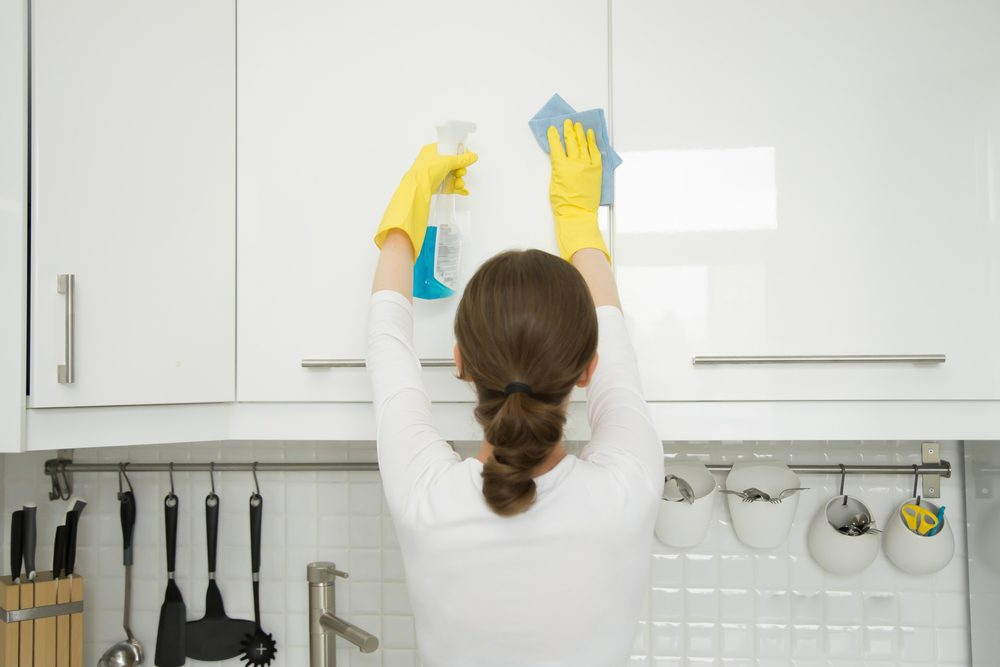
What You'll Need
Instructions
1. Make a DIY cleaning solution
A DIY cleaning solution of liquid dish soap and warm water can clean most cabinet types, such as metal, painted wood cabinets, plastic laminate, and vinyl cabinets.
With this simple warm water and dish soap cleaning solution, your cabinets can be cleaned of food smudges, dust, and light oil buildup. The liquid dish soap functions as a degreaser and can even eliminate stubborn external buildup.
Cabinets can also be cleaned using an all-purpose cleaner, but it's crucial to test cleaners in an inconspicuous area to ensure that they won't harm your wood cabinets' finish. Before using, ensure that you read the directions and test it out in a secret place first.
2. Remove everything from the cabinets
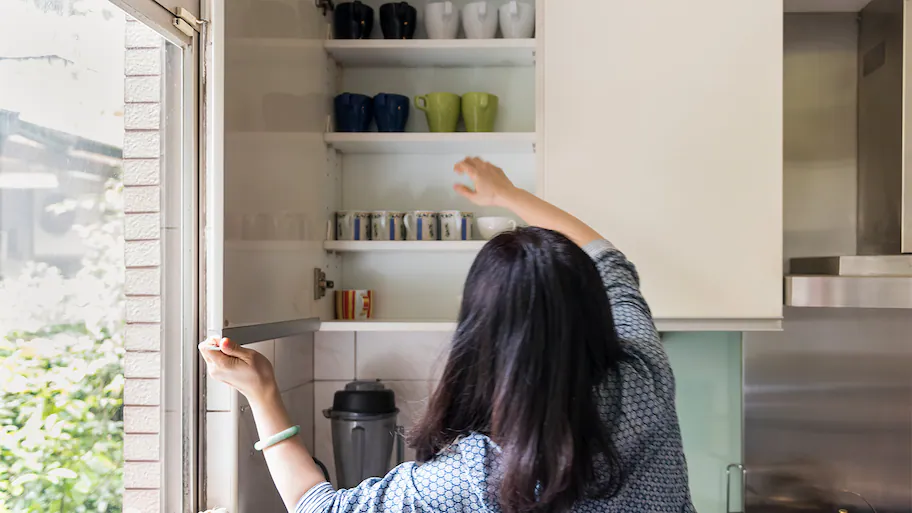
Empty the wood cabinets' contents methodically, starting with the uppermost cabinets, so it will be easier to put everything back where it belongs. You can also check the expiration dates on every food item.
Use a soft, damp cloth with a soapy water solution as you clean up and wipe away dirt and dust in the wood cabinet. Run a fast cycle in the dishwasher with glasses and dishes that are not frequently used to give them a fresh look.
Cleaning kitchen cabinets two or three at a time may be more accessible if you don't have a lot of countertop room to stack items on. However, always clean from the top of the wood cabinet and work your way to the bottom.
3. Work from the top down
The worst kitchen filth out of sight tends to accumulate at the top-of-wall units unless your cabinet fits flat to the ceiling. You may also use vinegar, baking soda, and water, natural cleaning products, to get rid of stains.
A paste made from white vinegar and baking soda will generally shift those stubborn stains and spots.
However, it is essential to test this paste in an inconspicuous place to ensure that it won't damage the wood surface of your kitchen cabinet.
Apply and spray a mixture of baking soda and plain white vinegar to the surface and let it set for a few minutes to remove the thick layers of grime off the tops of tall kitchen cabinets.
After cleaning the area with a damp sponge and a strong, straight edge, remove the debris with rags or paper towels. Lightly reapply the cleaning solution and dry it thoroughly with a clean cloth because your kitchen cabinets may become damaged and discolored if water is left on them.
4. Vacuum and clean the kitchen cabinets' interior
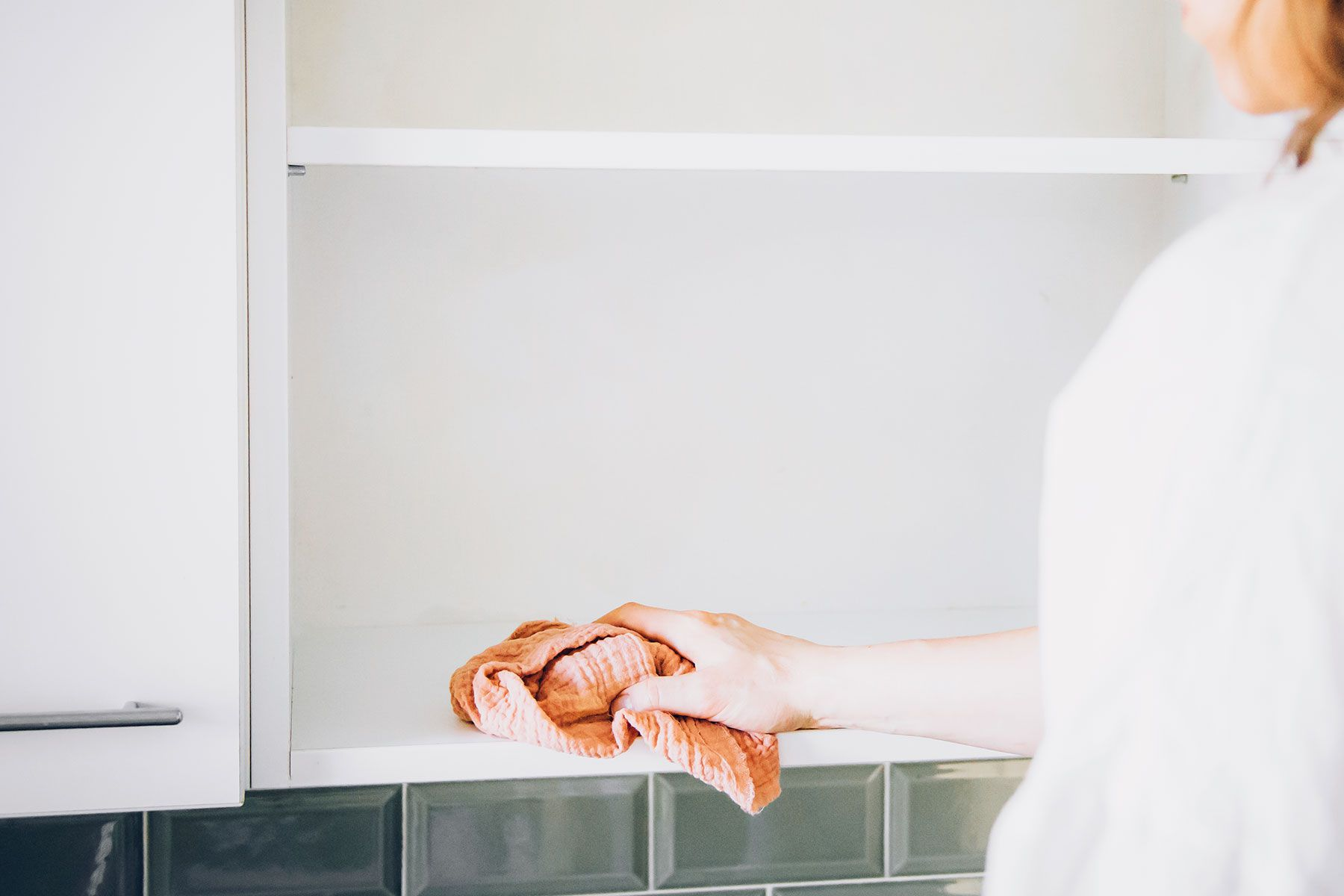
Vacuum out each cabinet and drawer while reaching to the back, into corners, and along shelves and joints to remove significant crumbs and any hidden grime and dust.
Next, use the DIY cleaning solution made up of a mixture of a few drops of dish soap in a bowl or sink of warm water and start washing the cabinets to remove the grease and filth. Use a clean, soft cloth or damp sponge dipped in the cleaning solution but not completely saturated.
You may spray the surface with white vinegar and sprinkle some baking soda to remove the grease and dust inside your wood cabinet. Let the vinegar and baking soda sit for several minutes before rinsing the interior with a damp cloth in warm water. Then, use a kitchen towel or microfiber cloth to dry the surfaces.
5. Clean the door of the kitchen cabinets
The simplest method for cleaning kitchen cabinet doors is to use a damp cloth and move it in circular motions starting at the top of the door. A small amount of dish soap in warm water sprayed onto the wet cloth or sponge should be sufficient to wash oily doors.
You may also use a solution of 2-parts hot water and 1-part white vinegar on the hard-to-remove grease that collects on the kitchen cupboard doors.
Scrubbing brushes and cleaning solutions with harsh chemicals must be avoided when washing cabinet doors. Don't spray any liquids, even plain warm water, directly onto the doors, as any streaks or pools of fluid that form when drying could damage painted and wooden finishes.
To ensure all dish soap is gone, give the area a second wash with hot water. Make sure you wipe dry the smear-free surfaces by wiping them once more with a dry microfiber cloth.
6. Wipe glass, or mirror features, handles, pulls, and knobs
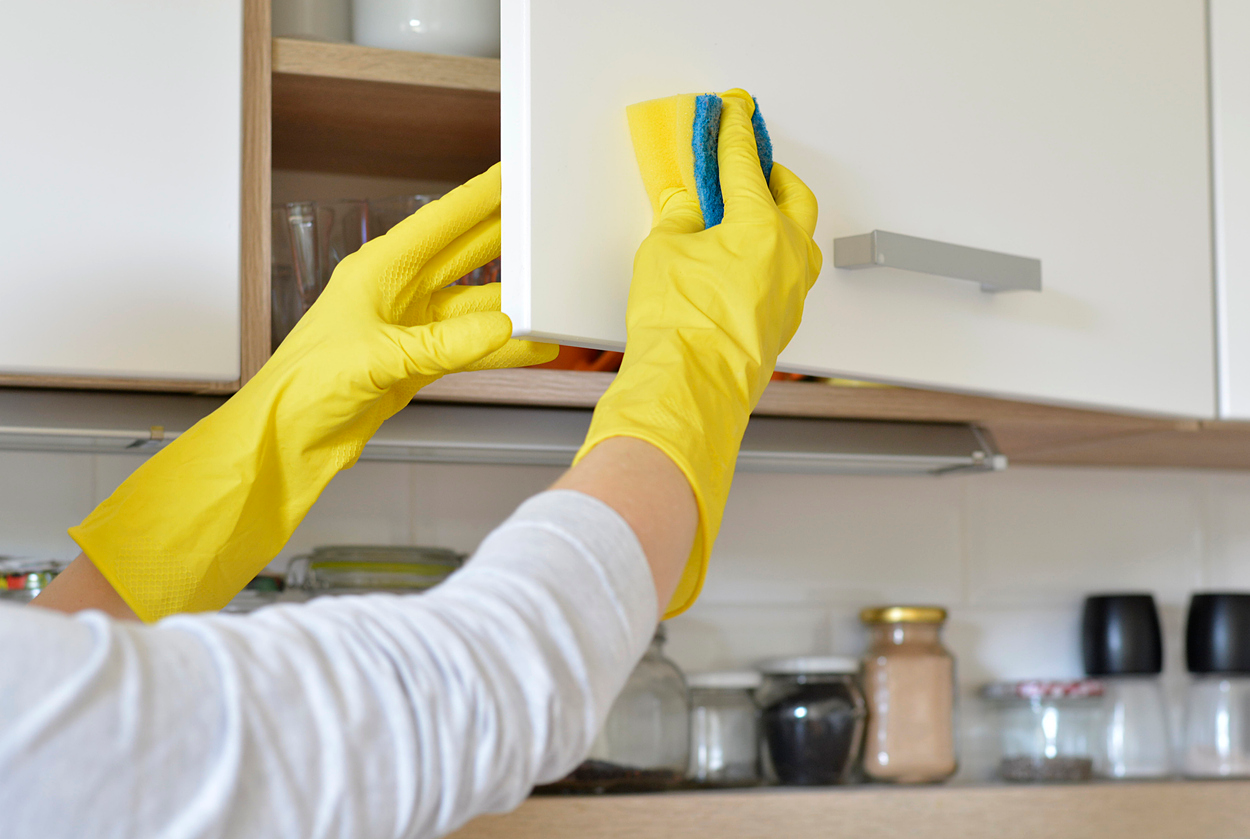
To wash the glass or mirror features of your kitchen cabinets, spray commercial glass cleaner onto a lint-free cloth or paper towel first. Don't directly spray the glass since the cleaner could leak into the cabinet's woodwork or other areas and stain them.
Don't forget to wipe down the cabinet hardware, including handles, pulls, and knobs, with a moist cloth. For tough grease and grime stains, use some diluted washing-up solutions. You can use an old toothbrush dipped into a mixture of warm water and soap to gently scrub those hard-to-reach spots.
Avoid using any cleaning products that contain lemon or other acidic elements if the metallic hardware is unlacquered since they will quickly fade the finish. Use caution not to scratch the kitchen cabinet finish when using a soft-bristled old toothbrush around the hinge joints when removing dirt and dust.
7. Let it dry with a clean, soft cloth
After you wash your kitchen cabinet, let them air dry for a couple of hours before restocking them. To ensure no water is left to damage the cabinet surfaces, wipe them dry with a clean, soft cloth.
If any cabinets, like those containing syrup and cooking oils, were challenging to wash, consider placing a greaseproof paper on the base of those cabinets.
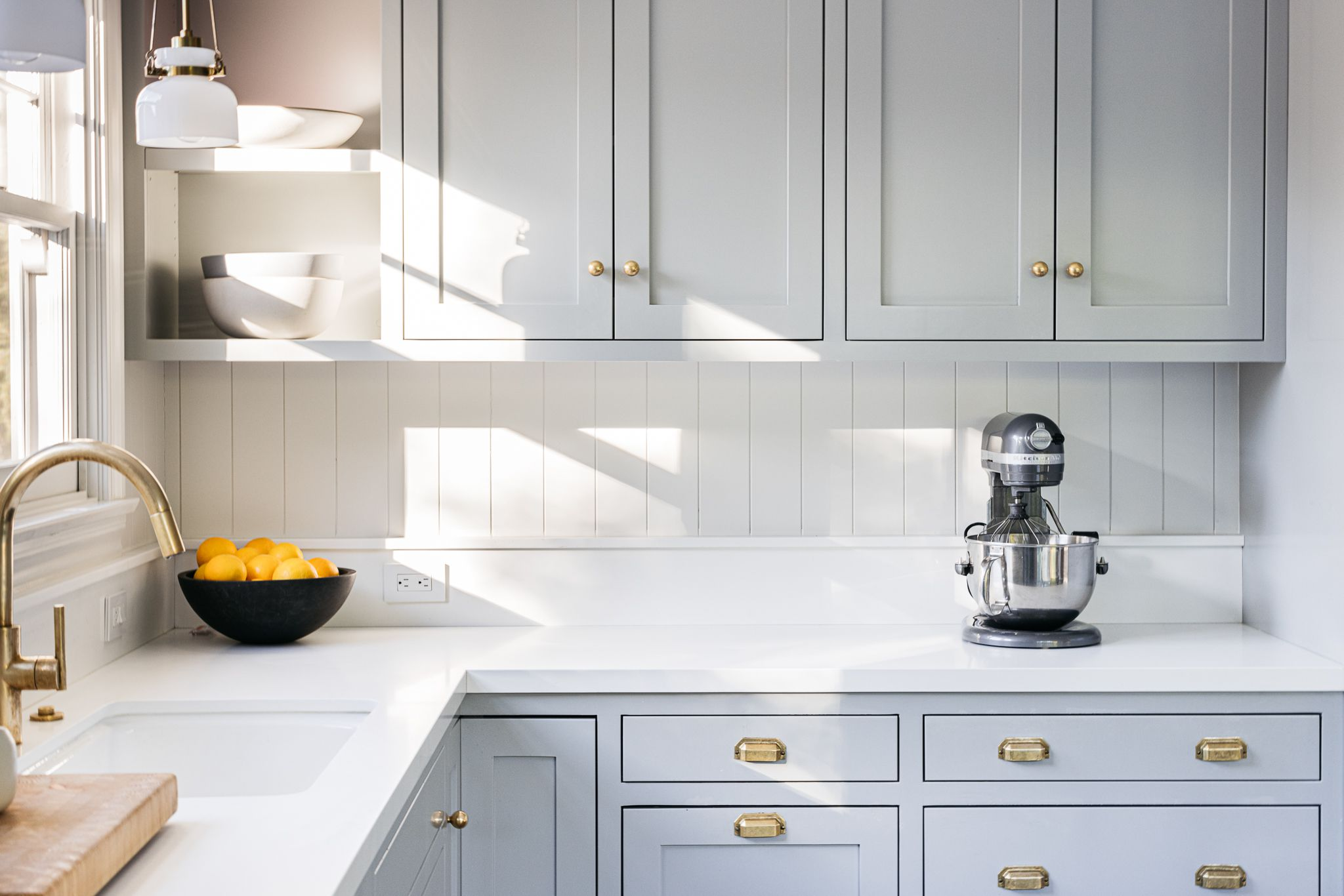
Get your kitchen cabinets looking clean and sparkling!
Your kitchen cabinets are the first thing people see when they walk in the door. They state your style, personality, and how well you care for your home.
If your cabinets look dingy and dirty, they can make even the most beautiful room look bad. But if your kitchen cabinets look fresh and well-maintained, they can make even a pain design feel luxurious.
Whether you're looking to maintain your kitchen cabinets or bring them back from the dead, we hope this guide has helped give you the steps you need to get started on your cabinet-cleaning journey.
For more cleaning tips and tricks, check out our ultimate kitchen cleaning guide to learn more!
FAQs
How often do you need to clean kitchen cabinets?
If you use your kitchen cabinet daily, they should be cleaned at least once a week. Cleaning them once a month should suffice if you only use them occasionally.
If there are just ordinary dishes and silverware stored in your cabinet, the frequency of cleaning will not affect the longevity of your cabinets' surface. If highly acidic foods are stored there, then cleaning more frequently will help prevent damage to the finish over time.
Generally speaking, the bigger the kitchen is, the more likely it is that dust will collect on surfaces like cabinets or a cupboard because there's more space for it to settle into, which means more work for you when it comes time to scrub them up.
Does vinegar harm wood cabinets?
Due to the acidic nature of white vinegar, vinegar can take the finish off wood kitchen cabinets when used to clean them. Although you can use a vinegar cleaning solution on metal hardware, it is best to avoid getting white vinegar on the wood cabinets to avoid any damage to the wooden surfaces.
Why do you need to clean kitchen cabinets?
First, you should deep clean kitchen cabinets because they're likely made from wood or particle board, which tends to absorb grease and other odors. If left uncleaned for too long, these odors can build up and become hard to remove later. Plus, since wood absorbs moisture, cleaning your cabinets regularly is crucial so that mold doesn't grow in them.
Another reason you should clean your kitchen is that they're often overlooked when cleaning other parts of the house, but they shouldn't be. Kitchen cabinets are one of the first things people see when they walk into your kitchen, so they should be kept looking as clean as possible at all times, just like the rest of your house.
Finally, dirty kitchen cabinets attract bugs and rodents into your home more quickly than clean ones, so it's best to clean your cabinets regularly.
